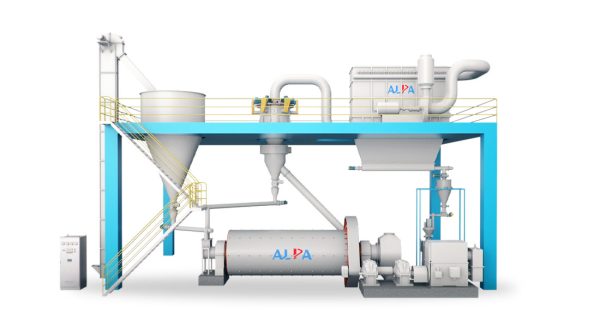
In order to purify quartz ore, the raw ore must first be crushed and graded for pretreatment, the purpose of which is to achieve the initial separation of quartz and associated minerals and provide raw materials with a suitable particle size range for subsequent processing and purification.
1. Quartz crushing
The purpose of crushing is to crush the quartz ore to the required particle size that is conducive to the release of impurities and subsequent treatment, including mechanical crushing, electric crushing, ultrasonic crushing, thermal shock crushing, etc. In the crushing process, two factors need to be considered: the dissociation effect of effective monomers and secondary pollution.
The traditional mechanical method is to use a jaw crusher or a cone crusher to crush the mineral to the required particle size, and the particle shape is irregular and angular. The jaw crusher is suitable for coarse crushing, the cone crusher is suitable for medium and fine crushing, and the impact crusher is suitable for fine crushing and coarse grinding.
In order to avoid the secondary pollution of iron impurities and improve the dissociation effect, thermal crushing, high-pressure pulse crushing, and ultrasonic crushing can be used, but the disadvantages of these methods are high energy consumption and high cost.
(1) Pulse discharge crushing
Compared with traditional mechanical methods, pulse discharge crushing has more obvious advantages. It is mainly divided into two forms: hydroelectric effect crushing and electric crushing. The shock wave generated by high-voltage discharge causes the rock to break along the grain boundary and selectively points to the mineral inclusions, which is conducive to the release of impurities and subsequent processing, and can also retain the particle size and morphological characteristics of the mineral to the greatest extent; pulse discharge crushing is usually carried out in water medium, which has the characteristics of dust-free and environmentally friendly.
(2) Ultrasonic crushing
Ultrasonic crushing is based on the mechanical energy of ultrasound. When the ultrasonic crushing head acts on the liquid, the liquid molecules produce a large number of small bubbles due to cavitation. The huge pressure generated by the bursting of the bubbles peels off the impurities on the surface of the particles.
(3) Thermal crushing
Thermal crushing is a method of heating quartz ore to a specific temperature to expand its volume or undergo phase change, produce a large number of tiny cracks, greatly reduce the mechanical strength, and then crush it.
2. Quartz grinding
Grinding and classification is a process after crushing. Since grinding is a process from coarse to fine ore, it is necessary to use appropriate grinding and classification methods to timely separate products with qualified particle sizes for classification, avoid over-grinding, and improve operation efficiency and yield.
The complete production line of ball mill + classifier is more suitable for ultra-fine grinding of quartz, with the characteristics of high product whiteness, good shape and gloss, stable quality indicators, and strong controllability of particle size distribution.
Due to the high hardness of quartz, it causes serious wear on the equipment and easily contaminates the product. In order to prevent the equipment from causing re-contamination of quartz, the equipment must be treated with wear-resistant protection, especially electronic-grade high-purity silicon micropowder. All cavities and pipelines and other stationary parts should be lined with ceramic or organic wear-resistant materials. Ball mills generally use alumina liners or ball stone liners, and use zirconium balls and agate as grinding media to reduce the possible impact of impurities such as iron or aluminum.
Quartz is hard and wear-resistant. Especially when fine grinding is required, it is difficult to obtain a powder product of ideal fineness by simply relying on the grinding effect of the medium. Therefore, a certain amount of grinding aids is often added in the process of quartz grinding to improve the grinding effect. Adding grinding aids or combined grinding aids in the grinding process can reduce the viscosity of the slurry, make the slurry more fluid, and increase the yield of qualified particle size products.
In the selection and application of grinding aids, there are currently mainly triethanolamine, DA dispersant, stearic acid, ammonium chloride, sodium chloride, alcohol, sodium oleate, sodium silicate, dodecylamine, etc., and fatty alcohol polyoxyethyl ether and dodecyl trimethyl ammonium chloride are also used for testing.
It should be noted that different industries and different quartz products have clear regulations on the particle size distribution of high-purity quartz particles. For example, the manufacture of quartz crucibles in the semiconductor industry requires the quartz sand particle size to be between 0.180 and 0.125 mm. Therefore, the particle size of quartz must be strictly controlled during the grinding process to avoid over-grinding.
